Most homesteaders want to be 100% self-sufficient. But even having a single cow producing milk every day can bring in a little extra cash on the side – and why not? All of the homesteaders I know have at least five cows producing milk all the time.
They stagger pregnancies to ensure they have milk all year round. The extra milk is sold to family, friends, colleagues, and per order clients.
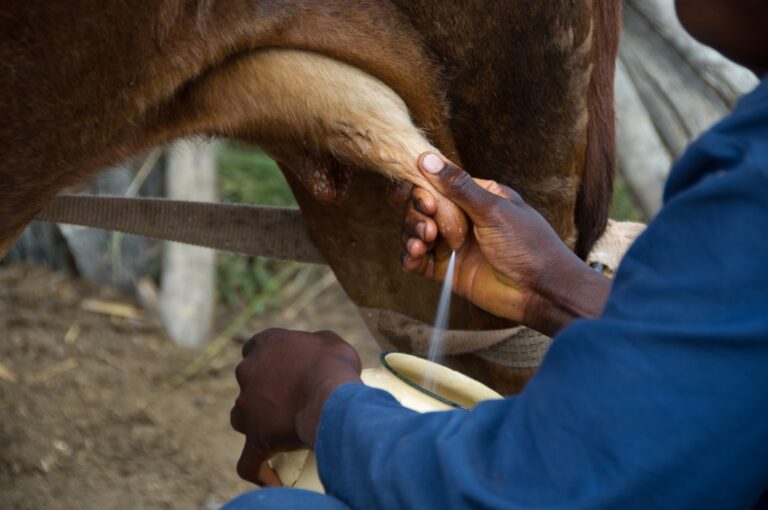
As a homesteader, I appreciate the work of other homesteaders, and I am happy to buy or trade products to support their businesses.
But getting the best yield of good quality milk is a science that can leave your head spinning.
There is more to feeding a dairy cow than just setting it loose in a field. The quality, the quantity, and the supplements all have a direct role to play in the production of milk.
Cows eat on average 44 pounds (20 kgs) of food every day. Their diet should contain a balance of grass, legumes, protein, grain, silage, antioxidants, vitamins, and minerals as well as a lot of water. Much of which we can grow ourselves.
The food you provide will influence the taste, fat, and quantity of the milk produced and will play a major role in the length of the lactation period.
I am going to cover what your dairy cows need to produce high volumes of milk. Some of it is a bit technical, but whether you have one cow or ten, all these nutritional sources are essential to the health of your cow/s and their milk production.
Table of Contents
Fodder – The Basis of Your Cow’s Diet
The very act of chewing stimulates saliva production in cows, which stimulates the production of milk.
To maintain its energy, needs a cow needs enough fodder to fill its stomach. If insufficient fodder is given, the cow will not produce sufficient milk. If you want more milk, feed more fodder.
Fodder is the unprocessed grass found in pastures. It is important because it provides the cow all the fiber, and energy, they need for milk production.
As cows are normally foragers, they love to graze, and providing them with an area to graze on natural grass will save you a lot of money as you grow the grass yourself.
It is important to rotate grazing areas (pastures) regularly to give the grazed area time to recuperate and give healthy grazing in the future. If you are having difficulty growing grass for your cow you can supplement their grazing by providing hay for them.
Different regions have specifically well-suited grasses that grow based on climate, soil, and of course, available space (if you have limited space for grazing you will love the little section on hydroponically growing fodder).
You need to be sure not to overgraze a particular area as this can damage the soil to the point where nothing will grow in that area for a long time, and only after much time and investment in soil nutrients, and compost or manure.
You should also ensure that you do not have too many cows for your property.
Each type of grass tastes different, and the taste of the grass also affects the taste of the milk. Cows raised on sweet grasses produce very sweet, tasty milk that is rich and creamy.
You also do not have to stick with just one type of grass. Any cow will tell you: variety is the spice of life.
Grow different grass in separate pastures if you have space or mix your seeds when you plant new grass. There are no rules when it comes to fodder.
But which is best? Grass, legumes, and trees are all great sources for fodder. These are some of the favorites, but you will have to check up on what grows in your area. They are easy to grow and high in nutrients.
Napier Grass
Napier grass is a very popular fodder because it encourages milk production and is good for weight gain and growth. Its shortfall is that it is made up of 70 to 80% water.
This is not ideal for the cow’s digestion or the level of milk fat. If you are going to use Napier grass, you will need to add plenty of roughage and other energy sources like wheat germ, molasses, or maize / corn.
Lucerne
Lucerne is also very popular because the milk has a sweeter taste and often has a higher quantity of cream. Lucerne falls under the category of legumes. The crude protein content is roughly 15 to 20%.
It is not suitable for grazing but farming it will save you a bundle. It is great for cows who are raised indoors. The high digestibility of Lucerne helps increase milk production.
Sorghum
Sorghum is a very popular choice for dry areas. It can be planted year-round but does best between 77°F (25°C) to 95°F (35°C).
This is an easy to grow fodder that grows even in drought-stricken areas. Because it grows year-round, it is perfect for baling to store or sell.
Maize or Corn
Another popular crop for your dairy cows is maize or corn. This is an excellent source of roughage, and will do your cows digestive system wonders.
If you have corn growing in your vegetable garden, don’t throw out the husks, give them to your cows. It is a great energy source and can grow almost anywhere.
Para
If you live on the opposite end of the spectrum where flooding is a regular occurrence, then para grass is a good choice to grow.
It does grow well in arid and semi-arid areas, but it does not do well in winter. You will need to bale enough to see you through winter. This grass can be harvested 75 to 80 days after planting.
Desmanthus
Desmanthus is also a legume that can be grown year-round. Depending on rainfall in your area, you may need to irrigate the crop. You can harvest your crop after 90 days from planting.
Trees
Another form of fodder would be fodder that is grown on trees. This has the added benefit of providing shade for your livestock and it is a sustainable source of fodder for year after year.
Reaching for food is a good way to stimulate your cows. The two most popular trees are the Sesbania tree and the Gliricidia tree.
Sesbania Tree
The Sesbania tree is a hardy tree that can be grown in all soil types. Your first harvest will be after 8 months from planting and you can expect to harvest roughly 100 tons per year.
Gliricidia Tree
The Gliricidia tree is also a hardy tree that grows in most soil types and can flourish in most climates.
They are great shade trees that look beautiful. Its leaves also make great manure to fix nitrogen problems in the soil that could affect plant / grass growth.
Hydroponically Grown Fodder
More and more homesteaders are turning to hydroponics to grow their own fodder as this takes up very little space to grow and eating hydroponically grown fodder will simulate grazing in a field and stimulate the cows chewing instinct.
The size of your grow operation can be as small as a closet or as big as a barn depending on your needs.
Barley is the most popular choice as it grows very quickly, and is very nutritious.
The barley is grown indoors using irrigation. When the fodder is ready, it is removed from the pallets it is grown in and given to the cows as is. The cows will have to pull bits off as they would do in a field and they will eat the whole plants (roots included), so nothing goes to waste.
The success of the system is that the climate, water, and artificial lights act as nature would without having to rely on things like sunshine or rain. By growing fodder like this, you will have an easily sustainable crop that can be grown anywhere, regardless of where you live.
Protein
Protein is the second most important ingredient to a healthy, productive dairy cow. Proteins will help maintain the body and will help microorganisms convert roughage to nutrients in the stomach. They should have 16 to 18% protein in the rations,
Protein also supplies the ammonia needed for microbial growth and supplies the amino acids needed for absorption from the small intestines.
A lactating cow requires 0.892 pounds (0.405 kgs) of protein just to maintain her own weight. For milk production, she requires another 7.56 pounds (3.44 kgs) of protein per day.
Including legumes like sweet potato, vine, bean straw, or white clover can save you money without a negative impact on the quality or quantity of milk produced.
Vitamins, Minerals, and Antioxidants
If you want your cows and their calves to be healthy, adding a mineral lick and vitamins will be essential as these encourage proper tissue development for the fetus and the cow, enabling her to produce milk.
Salt
Adding a mineral lick (salt block – NOT table salt) will provide your cow with all the minerals she needs. A dairy cow needs 35 to 45 grams of salt a day.
Just like people, cows have cravings. If they do not have access to a salt lick, they will start eating very odd things like wood, dirt, and even rocks.
Cows love the taste, but it is also important for the cow’s appetite and to maintain a good weight. A lack of salt in the diet can cause very serious health issues and can even result in death.
Chromium
The most important mineral needed by cows is often completely overlooked. Chromium helps partition glucose. Cows experience a lot of stress before, during, and after birth. During these times they require large amounts of glucose.
Chromium is needed to potentiate the action of insulin. It is critical for the first three weeks after calving as it regulates and optimizes the use of glucose for milk production.
Chromium also helps reduce the stress the cow is under in those final weeks of pregnancy and early weeks after calving. It also improves the reproductive system making it easier for cows to conceive and bare healthy calves.
If you are not supplying sufficient glucose, your cow will use her own amino acids to make glucose.
If she needs to use the amino acids to create glucose for her own survival, the lack of available amino acids means she will not produce a large volume of milk. Glucose is essential for the production of milk.
During early lactation, a single cow will produce 110 to 220 pounds (50 to 100 kilograms) of milk. To do this she will need to take in 8 to 16 pounds (3.6 to 7.2 kgs) of glucose per day.
Fortunately, as we all know, glucose = sweet and sweet = yummy which means all cows love the taste. The more glucose they take in, the more energy they will have for milk production, and the tastier the milk they produce will be.
Vitamins
Vitamin supplements are important because cows are unable to produce vitamins A, D, or E. These are essential to the quality and the quantity of milk produced and therefore have to be included in their diet.
Calcium and phosphorous are often not included in feed and should be supplemented as they are necessary for the health of the cow, fetus, calf, and most importantly for the production of milk.
Antioxidants
To maintain the health of your cows you should include supplements of vitamin E and selenium to reduce the impact of oxidative stress that can have a negative impact on the immune system.
What is Compound Cattle Feed?
A balanced diet is important for body maintenance, growth, and milk production. Compound cattle feed provides a balanced diet containing all the nutrients cows need during lactation.
It contains good quality grains, oil cakes, bran, molasses, common salt, minerals, and vitamins. It has all the protein, energy, minerals, and vitamins needed for the health of the fetus and the production of milk.
Compound cattle feed can be used as the whole diet for your cows. It has all the nutrients, but is not a perfect fix as it is costly and the lack of chewing on fodder can affect milk production substantially.
I don’t recommend you use this exclusively, but it is an easy way to ensure your cows are getting all the nutrients they need.
Make Your Own Concentrate Mix
You can make your own concentrate mix. Start off by putting about 0.20 gallons (750 ml) of water in a feed bowl.
Then add the following to the bowl of water: 5.5 pounds (2.5 kgs) each of rice bran, wheat bran, gram husk, half a kilogram of protein pellets, 0.11 pounds (50 grams) of coarse salt (not table salt).
Add 2.6 gallons (10 liters) of water to the mix, and stir thoroughly to moisten the mix. Wait about ten minutes for the mixture to soften, then add a bit more water and thoroughly mix it again before you give it to your lactating cows.
While she is eating, you can top the mixture off with more water a few times, mixing the ingredients in the bowl each time.
The goal is to get a lot of water in with the feed as the water will aid the digestion and absorption of the food to optimize her intake for the production of milk.
Nutrition Immediately After Calving
Immediately after calving, you can give the milk production a boost by increasing the dry matter intake to 32 pounds (15.5 kgs) daily.
The intake of water is so important for new moms. Each cow should drink 15 gallons of warm water per day. Remember that milk is mostly water, if a cow is not drinking, she is not producing.
You must keep feed banks clean and provide up to 10 pounds (4.5 kgs) of alfalfa and hay above their normal feeds.
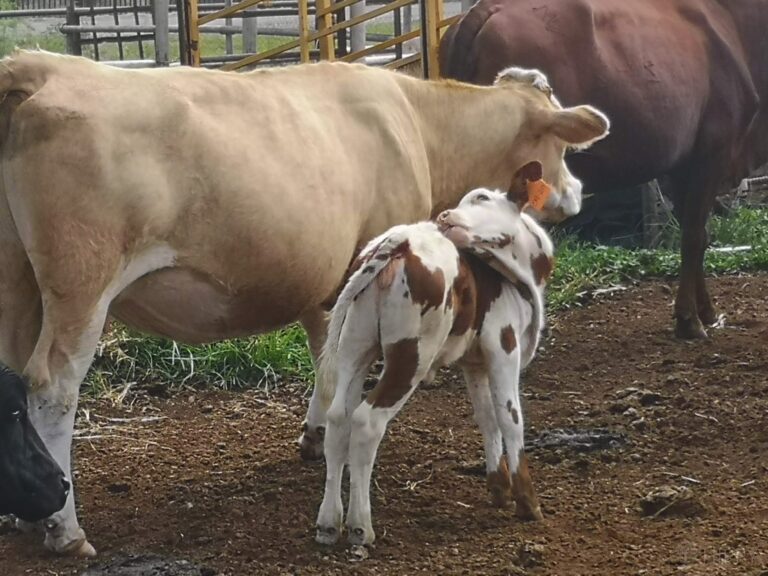
Feed Additives
Position feed additives can be very helpful in boosting your milk yield.
They contain ionophores that increase the availability of glucose, rumen-protected choline to improve the cow’s liver health, protected amino acid requirements without overfeeding protein, supplemental protected fat which increases energy intake, and yeast culture which stabilizes rumen fermentation.
Pathogenic Agents and Mold are a Big No-No!
Mold, fungus, fermented feeds, and yea
st will all affect your cow’s digestion. Your cow will not eat as much as she needs as anything fermented or off will make her stomach bloat and reduce her appetite.
Check bags of grain, check fields for dangerous weeds, check bedding, check hay bales, check every ingestible source for signs of mold or fungus, and make sure your cows are eating only fresh healthy feed.
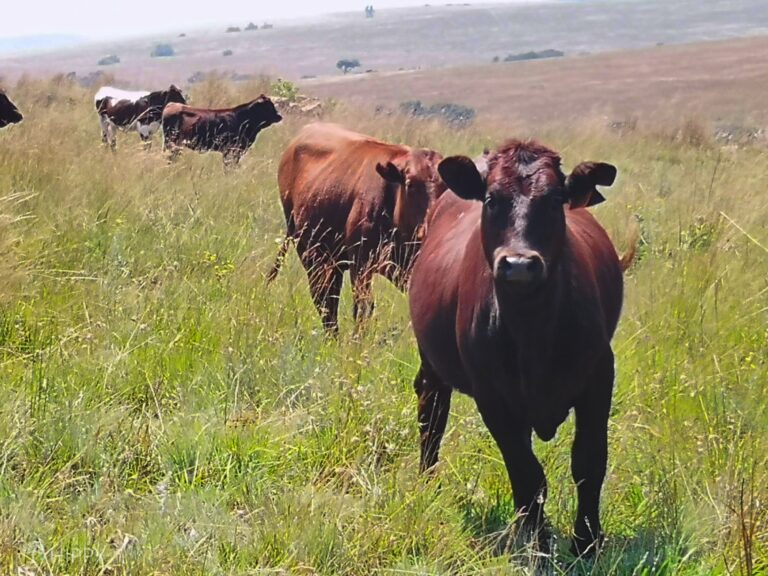
Keep Some Foods Out of Reach of Cows
Cows love variety, but this can lead to hurt feelings for you and your cow if she gets into your vegetable garden. Some of your vegetables are poisonous to cows so make sure that if you grow them, they are out of reach.
These include:
- ✕ Onions
- ✕ Beans
- ✕ All Amaranthus plants
- ✕ Brassica plants (cabbage, spinach, and Sukuma wiki)
- ✕ Solanaceae or night shade plants (tomatoes, Irish potatoes, eggplant, bell peppers, and capsicum)
Also, do not give cows freshly cut grass. If you are cutting your own fodder, leave it in a dark place for 24 hours to wilt, then chop into 2″ pieces to make it easy for your cow to eat.
Is Crude Fiber Good Fiber?
Crude fiber is nutritionally obsolete. It consists of indigestible cellulose, pentosans, lignin, and similar components that are not water-soluble.
For milk production, the crude fiber content should never be more than 16% calculated on the dry matter content of the ration. The less crude fiber included the better. You want every bite of food to have nutritional value as this translates to more milk.
It is not the same as dietary fiber, which is necessary for digestion.
Water – the Most Important Ingredient
The main ingredient in milk is water. Milk is 90% water. Do not overlook this part of your cows’ diet. For every 1.32 gallons (5 liters) of water she drinks, she will produce 0.26 gallons (1 liter) of milk.
She should always have access to fresh, clean water. Lactating cows drink an average of 31.7 gallons (120 liters) of water every day!
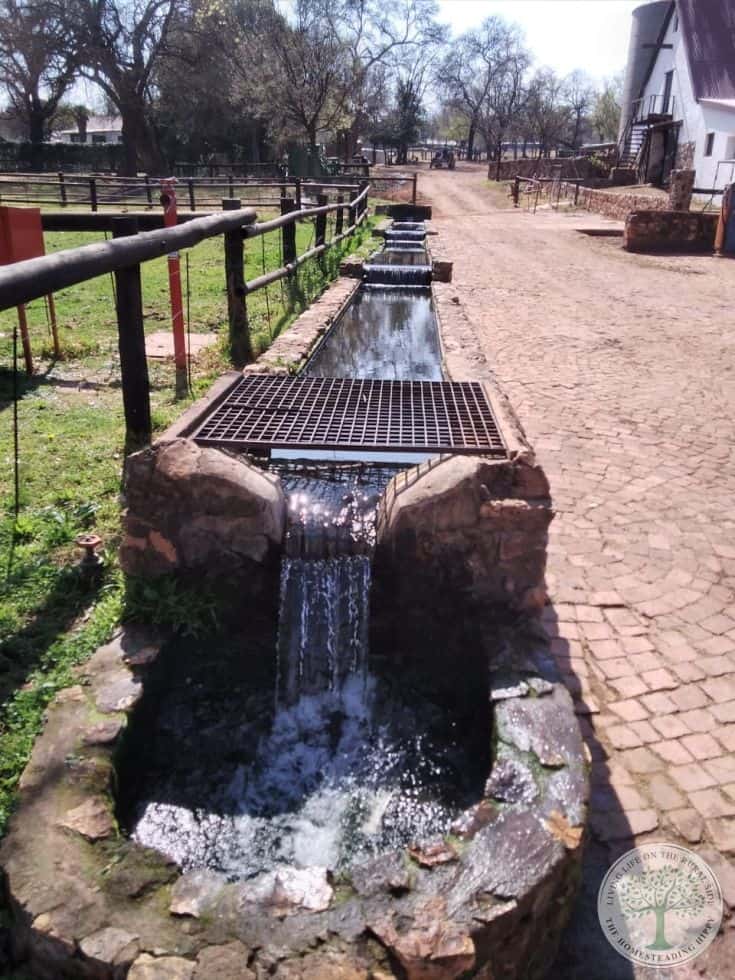
Some Final Thoughts
It is essential that cows have access to food and water all the time so that they consume the energy requirements to be able to produce milk.
As a homesteader, you will have the opportunity to grow much of your cow’s nutritional needs yourself. By growing most of your own feed, you are not only saving money, but you are also ensuring that what you feed your cows is of great quality.
However, it is not good enough to just have food available all the time. The type of food available is by far the more important factor in milk production.
Protein, fodder, vitamins and minerals, antioxidants, fiber, grain, sugar, and forages all play an essential role in keeping your cows healthy, especially during pregnancy and lactation, and ensure that your milk yield is as high as it should be. The higher the nutritional intake the more productive their output will be.
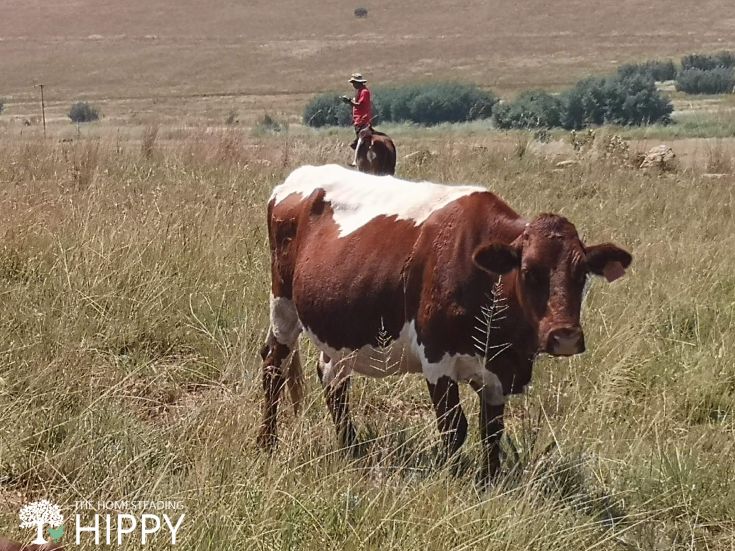
If life was simple, we all would have a spreadsheet that would dictate what to do, how to do it, when to do it, in what quantity to do it, and we would be rewarded with a perfect income, perfect family, perfect friends, perfect home, and perfect life by following the guidelines in the spreadsheet.
However, life is not a spreadsheet, and cannot be defined by a spreadsheet. Temperatures fluctuate, disease occurs, food spoils, parasites occur, and there are a million other factors that influence daily life.
For this reason, if we want to improve the amount of milk our cows produce, we must manage the food intake of our cows.
In different areas, cows are affected by different factors such as elevation, temperature, breed, health, and composition of grazing and food. It is therefore important that we evolve with our surroundings.
We should be adaptable in our attitude towards feed, and not be afraid to approach others for suggestions and advice.
Send us a tip or ingredient you have had great success with for your lactating cows in the comments section below. We would love to hear from you what feed has been particularly effective in increasing your milk yield!
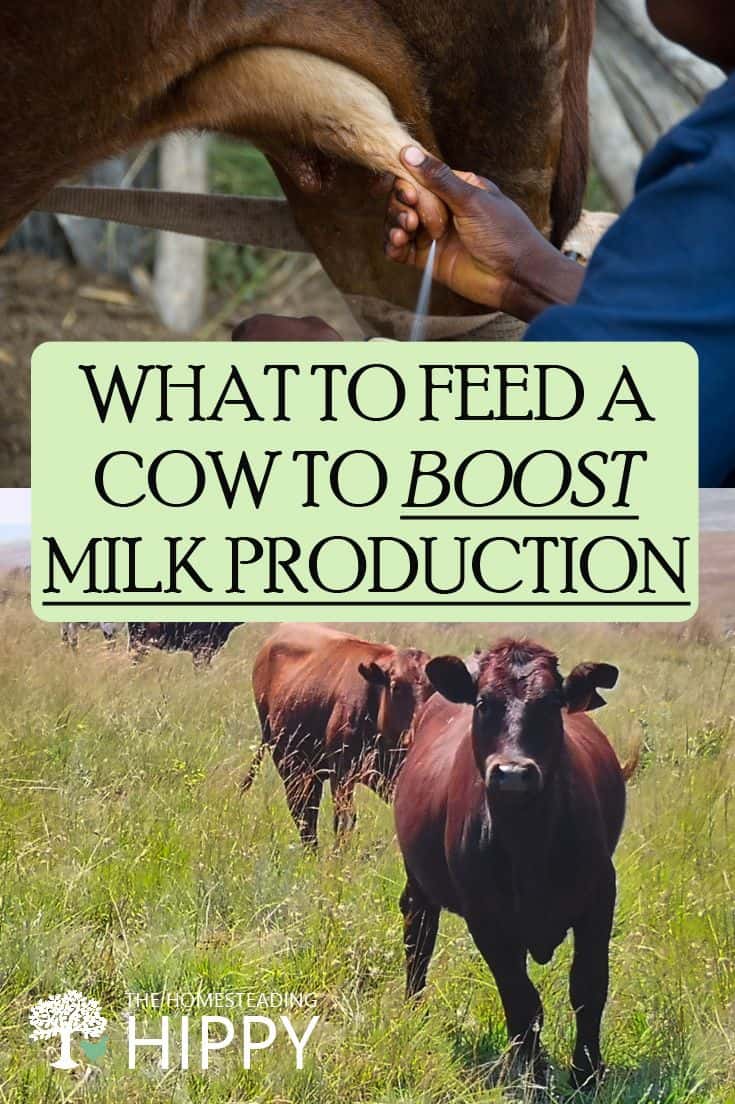
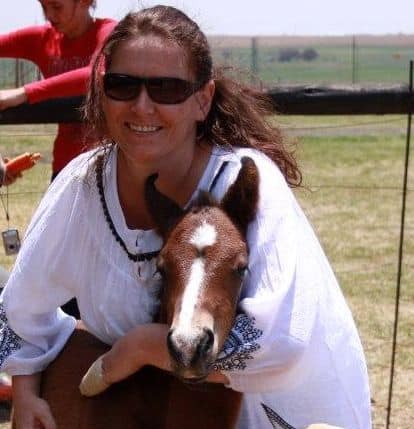
Di-Anne Devenish Seebregts was raised in an environment where daily life consisted of hiking, environmental conservation, growing fruit and vegetables, and raising poultry for meat and eggs.
She combined her passion for the writing word with her love of the pride that comes with not relying on others. She raised three children (who are now adults) to value the environment, and understand the value of being self-sufficient.
Find out more about Di-Anne on our About Us page.

I was planning on feeding a mixture of corn, oats and barley to my lactating cow-however I don’t know what the best amounts of each would be in a 500# mixture and if there is anything else I should put in it…